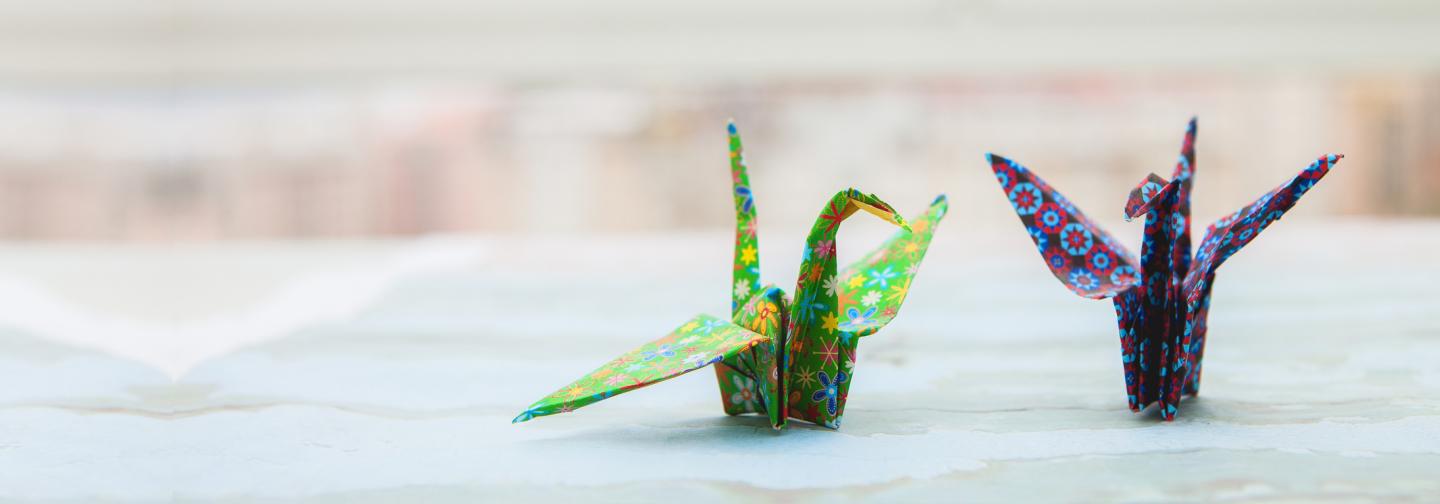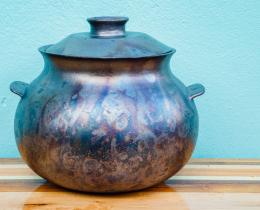As an Omega member, you can experience the ancient art—and popular Omega practice—of making paper cranes with the piece of origami paper found in your Welcome Kit. Just follow these simple instructions and add it to our staff collection by emailing a photo of your creation to members@eomega.org.
Origami’s Long History: From Sacred to Popular
Origami (folded paper) first appeared in Japan in the sixth century. Originally called orikata (folded shapes), it was available only to a few people for strictly ceremonial, often religious purposes. But by the 17th century, as paper became mass-produced and more affordable, paper folding became a new art form, available to many. Origami’s folding patterns and sequences were passed down orally from generation to generation until the first written instructions appeared at the end of the 18th century.
Europe also has a tradition of paper folding that dates back to the 12th century, when the Moors brought their system of mathematically-based folding to Spain and, by the 1800s, kindergarten-aged children in both Europe and Japan were learning origami. Today’s system of folding patterns uses symbols, arrows, and diagrams developed in the 1930s by Akira Yoshizawa. Contemporary origami often includes a puzzle aspect to the folding and can feature models created by artists and designers.
But the crane remains origami’s most popular symbol. Ancient Japanese legends hold that anyone who folds 1,000 origami cranes (senbazuru) will be granted a wish by the gods for happiness, eternal good luck, long life, or recovery from illness or injury. A book published in 1797, Sen Bazuru Orikake (Secret to Folding One-thousand Cranes) contains some of the first written instructions for how to make them. The popularity of the concept became widespread, however, thanks to Sadako Sasaki, a young girl who died of leukemia when she was 15 years old in 1955 due to radiation poisoning from the bomb dropped on Hiroshima when she was a baby. Since then, as symbols of peace, cranes are often installed and left as offerings at places like war or atomic bomb memorials.
“She let out both the pain of our parents and her own suffering with each crane,” her brother explained of the 1,000 cranes that are part of her legacy and that her family donates around the world to places in need of healing.
Origami Cranes & Omega Family Week
In 2017, Origami cranes were the theme for Omega Family Week, which offers a unique balance of time together and time apart for family members of all ages. Staff pitched in to create the 2,500 cranes that filled the ceiling of the dining hall and decorated the main lobby. According to Kathleen Laucius, Omega’s creative director, the “all hands on deck” experience of the staff took on a life of its own, generating energy that extended throughout the week.
Families got in on the fun, too, inspired by piles of colorful origami paper and design challenges that ranged from simple to difficult. Throughout the week, they created many more cranes to decorate campus and take home as souveniers.
You can add to Omega's crane collection by making your own crane—and perhaps a little bit of luck—today. We can't wait to see what you create. Email a photo of your crane to members@eomega.org.



